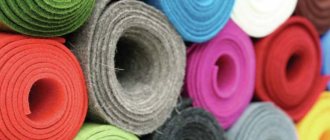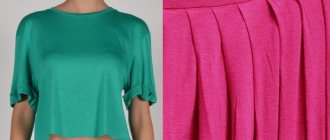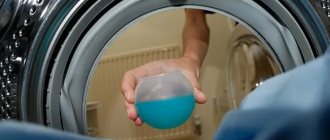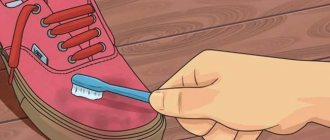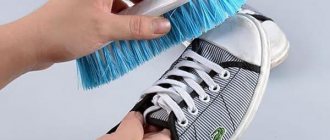Fleece is a non-woven synthetic fabric. It was born through the efforts of Americans in 1979, which is why it is recognized as “young” among other materials.
The fabric immediately attracted the attention of clothing manufacturers for those who prefer to relax actively. Fleece items have captivated buyers with their ability to retain heat, allow the body to “breathe,” and also not absorb moisture from the outside and have little weight. Non-natural material has become a worthy replacement for woolen products.
What kind of fabric is fleece and what is it used to sew?
Knitted fabric with a soft, delicate, woolly structure is produced from artificial, polyester fibers. There are other synthetics in the material - spandex (gives elasticity) and lycra (increases wear resistance).
The properties of fleece are also affected by various means used for processing, for example those that reduce its flammability:
- The anti-peeling procedure prevents the formation of pellets and helps preserve the presentation and “fluffiness” of the material.
- Treatment with moisture-repellent and antistatic agents further improves the consumer qualities of the material.
- The use of bacterial mixtures protects matter from fungus, dust mites, and moths.
Fleece clothing is hypoallergenic.
Enterprises produce many types of fleece with different consumer properties. This is the density, measured in grams per 1 square meter. m.
It is endowed with:
- microfleece (less than 100 g/sq. m), used for sewing linen and household items;
- polar fleece (100 - 200 g/sq. m) - thermal underwear, leggings, sweatshirts are sewn from the finest fabric;
- medium-density fleece material (200 - 300 g/sq. m) - children's clothes, socks, gloves, hats are made from it;
- dense fleece material (300-400 g/sq. m), intended for sewing blankets, bedspreads, winter products;
- ultra-dense fleece (400-600 g/sq. m), used for making clothing and equipment for tourist purposes.
Fleece jacket
Fleece fabric also differs in its variety of colors. It can be plain-colored (one color) or printed. A variety of patterns allow the material to be used for sewing special clothing (for example, camouflage) and clothing for children or home textiles.
Fleece fabric has many advantages.
ARTICLE FOR YOU
How to wash guipure items correctly: in the washing machine and by hand
The following qualities stand out in particular:
- elasticity;
- pleasantness when touching the skin;
- a light weight;
- breathability, comfort;
- absorption;
- thermal insulation, thermoregulation;
- hypoallergenic;
- strength, wear resistance;
- practicality;
- duration of color retention;
- ease of care.
In addition, the fabric has an affordable price.
Fleece clothing is practical and comfortable
Rules for washing fleece products
Proper care of the material will allow you to preserve the presentation of the product made from it for a long time. And although fleece fabric is easy to care for, you still need to wash products made from such material with caution - it is included in the group of delicate ones.
To prevent pilling, damage and elongation of products, before washing they must be shaken out, turned inside out, zippers and buttons fastened.
It will help you choose a washing option by studying the information on the label attached to each model. The label displays, in particular, the type of washing - hand, machine or both, the ability to select temperature conditions, detergent and bleach, whether ironing is necessary or not.
Label information
Labels on blankets provide comprehensive information about composition and care, which will help increase their service life.
The international labeling system in Russia is enshrined in GOST and is mandatory for textile products.
Standard for graphic images and their interpretation:
- Wash. The washing method is determined by the image of a basin with water, the numbers indicate the maximum permissible temperature.
- Bleaching and dry cleaning. Tips for housewives and professionals to help clean a blanket without risking fibers and color.
- Spin, dry. Recommendations will help avoid product deformation.
- Ironing. A crossed out iron on the label means that the fibers of the product may melt under the influence of high temperatures.
In addition to care recommendations, the label contains information about the composition, which will help you choose the optimal mode for machine washing, if possible.
If the label on the product interferes with operation, you can remove it, but be sure to keep it. Its absence may result in a refusal to wash the blanket at the dry cleaner.
Washing fleece by hand
Fleece products can be washed by hand if indicated on the label. This is especially true for children's clothing, blankets and large items that do not fit into the drum of an automatic machine.
Washing fleece by hand
Step-by-step instructions for manual washing are as follows:
- The container is filled with water at temperatures up to +40°C. If there are few objects, a basin will do. It is preferable to wash blankets, coats, and sports overalls in the bath.
- Add the composition for delicate fabrics to the water and mix thoroughly. Fleece items are immersed in water to soak for up to 1 hour, depending on their parameters.
- If, after the soaking time, stains remain on the fabric, they are treated with laundry soap.
- When washing fleece by hand, do not rub or twist it intensively. It is more correct to gently crush it with your palms in the container, not forgetting to turn the product over.
- At the end of washing, fleece items are rinsed in a large volume of water.
- During the last rinse, conditioner is added to the water; when outerwear is rinsed, a water-repellent composition is added.
It is prohibited to wring out fleece material. After washing is completed, it is spread on a grate installed on the bathtub to drain excess water.
How not to do it
Inexperienced housewives are sure that fleece items do not require special care. However, in reality, there are many mistakes that people make when washing such clothes.
Using hot water
Washing in hot water causes fabrics to shrink and become deformed.
Tumble dry
Using automatic drying causes wrinkles to appear on clothes.
Using regular powder
Conventional powders are poorly washed out of the structure of the product. In addition, they make the fabric more rigid.
Ironing
It is strictly forbidden to iron washed clothes. This procedure provokes a violation of the structure of the material.
Washing fleece fabric in the washing machine
If you need to wash a significant amount of fleece clothing, it is more advisable to process it using an automatic washing machine.
ARTICLE FOR YOU
How to wash gabardine items: in the washing machine and by hand
Washing fleece in a washing machine
But you need to follow these recommendations:
- checking products before washing, for which zippers and buttons are fastened, collars and fur cuffs are removed. At the end of the inspection, the clothes are placed in the drum of the washing unit turned inside out, and the drum is not filled to capacity;
- selecting parameters for setting up the operation of the washing unit. For fleece, they only correspond to the delicate wash functions, the “wool” and “synthetic” modes. In this case, spinning and drying are excluded;
- setting the double rinse setting - fleece requires a significant amount of water. This will prevent the formation of streaks on it due to insufficient leaching of the washing substance;
- the need to use a detergent composition for delicate washing and fabric softener. Outerwear items are cleaned without a softening rinse aid; instead, a rinse aid is used, after treatment with which the clothes become water-repellent when worn.
2-3 tennis balls or special balls are placed in the drum of the automatic machine for the measured distribution of things. This prevents the formation of pellets and rolling of the dried fabric.
Wash a blanket correctly
I sew fleece blankets for adults and children and have several of them at home. Therefore, I know how to wash a fleece blanket. When washed by hand, the shape of the blanket is better preserved.
Tips for washing a blanket:
- Make sure the blanket fits completely into the drum.
- Do not wring out the material so as not to wrinkle it.
- Dry in the air or on the balcony - let the moisture drain. Drying in the machine is out of the question; the blanket will be ruined.
- When rinsing, add conditioner. It will make the fabric soft and it will not become electrified.
- Drying on a clothesline is not advisable. There will be a bend left from it and the thing may stretch unevenly.
Vernel baby fabric conditioner does not cause allergies. Price - about 190 ₽
Gel detergents for washing fleece
Washing fleece items involves the use of compositions for delicate fabrics, mainly in liquid and gel form.
Liquid detergents and gels are completely washed away from the surface of things. But powders and soaps remain in some quantities after washing and rinsing fleece fabric in the form of streaks due to its significant hairiness.
Laundry soap is used only to remove stains that have been absorbed into the fabric. After removing the stained dirt, the clothes are washed in an automatic machine.
Gels for delicate materials and wool are ideal for fleece products, despite the fact that the material is synthetic. Such detergent compositions will help avoid the appearance of pellets on it.
Air conditioners and softeners are used to rid everyday items, such as jackets, sweaters, sweatshirts, of static electricity that accumulates during wear. It is unacceptable to use special rinsing agents for outerwear or branded dresses or suits, since conditioning reduces the hydrophobic qualities of fleece.
Gel detergents
Synthetic
Products made from artificial fibers are lightweight and soft, but can accumulate static electricity. Consequently, dust accumulates faster.
All the nuances of the WTO of synthetic blankets are collected in the table:
| Material | Peculiarities | Type of wash | Mode | Temperature | Spin | Drying |
| Acrylic and polyester | Soft, light, wear-resistant. Unpretentious in care. Pellets form and absorb odors. | Machine | Delicate, synthetic | 20-30 degrees | Maximum | In a vertical position, avoid exposure to ultraviolet rays |
| Microfiber | Wear-resistant, easy to care for, dry quickly. Ironing and drying at high temperatures is unacceptable | Machine, manual | Delicate, synthetic | 40-60 degrees | No spin or 400 rpm | Large product only on a horizontal surface, avoiding sunlight |
| Faux fur, plush | Wear-resistant, easy to care for. Accumulates dust quickly, heavy | Machine | Delicate or synthetic | 30-40 degrees | 400 rpm | On a horizontal surface |
| Fleece | Lightweight, resistant to mechanical stress, do not require ironing. Sensitive to high temperatures | Machine, manual | Delicate, handmade or synthetic | 40 degrees | No spin or 400 rpm | Upright in the shade |
| Viscose | Unpretentious in care. Requires conditioner to soften | Machine | Delicate | 40-60 degrees | Maximum | Upright |
Bleaching fleece items
If you need to bleach a fleece item that has lost its whiteness, but you don’t want to buy expensive compounds, you can use aspirin. It will help get rid of stains that spoil the appearance of the item.
3 tablets of acetylsalicylic acid should be dissolved in 0.5 liters of water, applied to problem areas and left for 3 hours. After the time has passed, it must be washed manually or in an automatic machine.
Grease stains do not like contact with chalk. Apply it to the contaminated area using a rubbing motion, and after an hour, the remaining chalk is swept away from the surface of the product and rinsed.
According to the following recipe, the entire thing is bleached.
ARTICLE FOR YOU
How to wash interlock items: in the washing machine and by hand
The composition requires:
- 10 liters of heated water;
- 10 tbsp. l. baking soda;
- 2 tbsp. l. ammonia.
The mix is thoroughly mixed, a fleece item is soaked in it for 3 hours, and then washed in a convenient way.
If you don’t want to bother with bleaching using homemade chemicals, you can easily restore the original whiteness of a fleece item using universal oxygen bleaches.
The most famous of them:
- Vanish, Amway (USA);
- “Bos Plus”, “Antipyatnin” (RF);
- “Umka” (Russia) – suitable for adding whiteness to children’s items, including New Year’s costumes and pillows.
Bleach powder VANISH
As a rule, domestic bleaches are inexpensive, unlike foreign products. But their work is no less effective.
Drying fleece material
Fleece items become dry quickly after washing.
But they need to be dried so that they do not stretch:
- The products are laid out on a horizontal plane, covered with a towel or sheet made of natural fabric - this way the clothes will not be deformed, and the cotton fabric will absorb excess moisture from it.
- Drying is done at room temperature.
- Do not place fleece to dry in direct sunlight - it can damage it. The same as placing synthetic things on a heating radiator.
How to dry properly
Proper drying of the product is of great importance. Otherwise, there is a risk of its deformation and loss of attractive appearance. Following these rules will help you avoid this:
- It is strictly forbidden to wring or twist the fleece. The water should drain naturally.
- It is recommended to dry small items naturally in a horizontal position. At the same time, they are laid out on terry cloth, which perfectly absorbs moisture.
- It is prohibited to secure fleece clothing with clothespins. It is important to try to evenly distribute the weight of the products.
- It is not recommended to hang items made from this fabric near heating sources.


